Repairing Japanese bicycle tyre valves (Dunlop, English, or Woods valves)
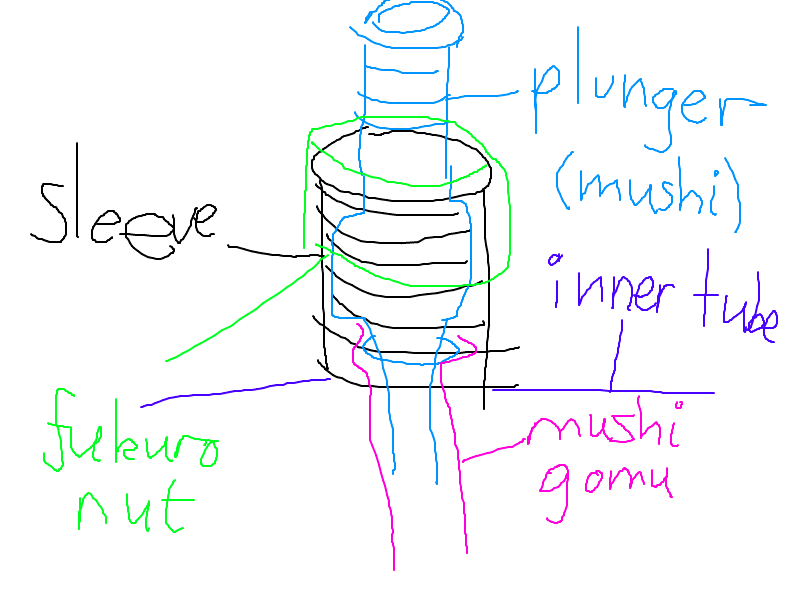
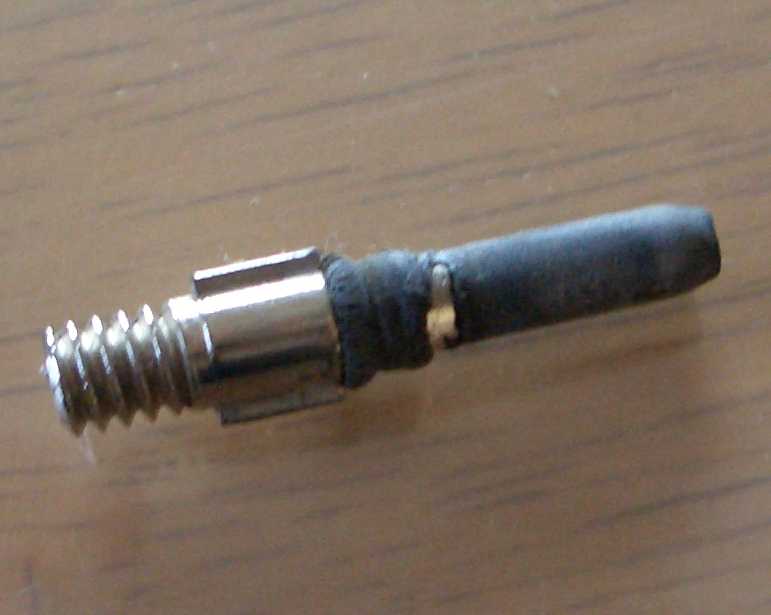
|
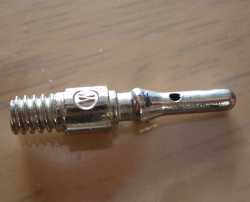
|
| This perished rubber caused a slow leak of air from a bicycle tyre. | Once the rubber (mushi-gomu) has been removed, the air hole is visible. The rubber covers this hole, allowing air to flow in to the tyre but preventing it from flowing out. |
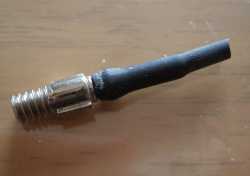
|
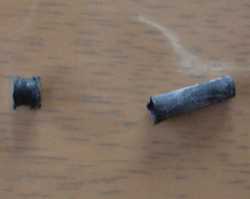
|
| The old perished rubber tube has now been replaced by a new one. | The perished rubber after removal. |
Cheaper Japanese bicycles use the type of valve known variously as Dunlop, Woods, or English valves, called eishiki barubu (英式バルブ, literally "English-type valve") in Japanese. Although Japanese people call this an "English valve", this type of valve is not used at all in England or the United Kingdom any more, and nor is it used in any other English speaking countries. The valve is simple to maintain, but contains a perishable rubber component.
The valve has five parts, a plunger, a metal sleeve, two nuts and a piece of rubber. The plunger, mushi (虫, literally "worm") has a hole in its side which passes air into the tyre. A rubber sleeve called mushi gomu (虫ゴム literally "worm rubber") fits around this, letting pressured air in but preventing air from flowing out of the inner tube. A threaded metal sleeve attached to the inner tube holds the plunger. A nut called the rim nut (リムナット) holds the outer sleeve to the rim. A screw cap with a small hole called the fukuro natto, (袋ナット literally "bag nut") holds the plunger down into the inner tube. If the screw cap is loosened, all the air flows out of the tyre instantly, and the plunger pops out.
The airtight connection is made between the rubber sleeve around the plunger and the valve. A plastic cap is usually fitted over the end of the plunger.
The most common cause of flat bicycle tyres for a bicycle with one of these valves is wear of the rubber sleeve, the "mushi gomu". If you have a Japanese bicycle, and your tyre goes flat, and pumping it up doesn't work, the first thing to try is to unscrew the valve's cap, pull out the plunger, and see if the mushi gomu has perished, got a hole in it, or broken off.
You can buy replacement "mushi gomu" at any bicycle shop or home centre. It's in the bicycle section near the puncture repair kits. You can also usually find it at the larger branches of 100 yen shops like Daiso.
Web links
-
Tyres and Tubes - Japan Cycling Navigator
Photo of a valve.